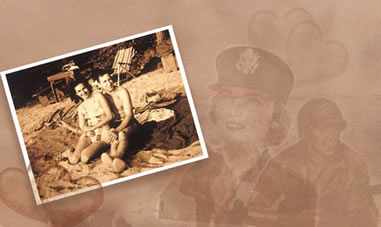|
|
"Silent" Sexual Revolution Began In 1940's and '50sdownloadable pdfThe sexual revolution did not start in the free-loving 1960s as is commonly thought, a University of Florida researcher says. It began with the “silent generation” of the 1940s and ‘50s, which as its moniker implies, didn’t talk much about sex. U.S. Census Bureau statistics on premarital pregnancy and vital statistics on single motherhood between 1940 and 1960 point to the unexpected conclusion that there was much more sexual activity during those decades than Americans were willing to admit, said Alan Petigny, a UF history professor whose research was published in the fall issue of the Journal of Social History. “People didn’t start having sex because Elvis Presley was shaking his hips or because Hugh Hefner came out with Playboy,” said Petigny, who said he is the first historian to use census data focusing on premarital pregnancies. “After 15 years of Depression and war, there was also a desire on the part of Americans to live in the moment and enjoy life, and they were accordingly less likely to defer to traditional restraints on their behavior.” According to Petigny’s research, the sexual revolution actually began during World War II, which had a great liberalizing effect on values, affecting everything from child-rearing to religion. For example, the proportion of the population that considered alcoholism a disease rather than a moral failing increased from 6 percent in 1944 to more than 60 percent in 1954, Petigny said. Dr. Benjamin Spock, in his 1946 book The Common Sense Book of Baby and Child Care, which was second only to the Bible in sales, advised parents not to become alarmed by their children masturbating. By 1950, even the politically conservative Norman Vincent Peale was warning his readers about the dangers of sexual repression, Petigny said. He relied on vital statistics and census data rather than sexual surveys, such as those completed by Alfred Kinsey and his staff in the ‘40s and ‘50s because the government’s hard numbers are likely more reliable. “Because rates of single motherhood focus on what people have done as opposed to what people claim to have done — or not to have done — they are significantly more reliable than either subject interviews or polling data,” he said. “The evidence from our study using census data suggests that the ‘40s and ‘50s experienced a sizeable increase in the frequency of premarital intercourse,” he said. “To argue otherwise, one would need somehow to reconcile the more than doubling of illegitimacy among whites, the more than tripling of all out-of-wedlock births and the evidence of a dramatic increase in premarital pregnancies.” Between 1940 and 1960, the frequency of single motherhood among white women increased from 3.6 to 9.2 newborns per 1,000 unmarried white women of childbearing age, Petigny said. Among all women, single motherhood rose from 7.1 to 21.6 newborns per 1,000 unwed women, he said. “Between the beginning of World War II in 1941 and the inaugural issue of Playboy in 1953, the overall rate of single motherhood more than doubled,” he said. “The silent generation may have been silent about what they were doing, but they weren’t all that complacent.” The crucial distinction between the ‘40s and ‘50s and the 1960s are in differences between conventions and conduct — what people said versus what they did, Petigny said. During the ‘60s, Americans simply were more willing to acknowledge the extracurricular sexual activities of the young than they had been during the previous decades, he said. Rather than a sexual revolution, an upheaval in social conventions is what occurred in the 1960s. What was publicly respectable changed enormously as social conventions came into line with personal conduct or as public manners converged with private morals, he said. Lawrence Friedman, a visiting professor in the history of science department at Harvard University, calls Petigny’s findings “very revolutionary.” Petigny tells us that “during the ‘40s and ‘50s big social and cultural changes occurred, and we acknowledged them and they became part of ‘60s headlines when the changes had already occurred,” he said. “It’s quite extraordinary for a young historian to think this big and this broadly.” Alan Petigny, apetigny@history.ufl.edu Cathy Keen
|

